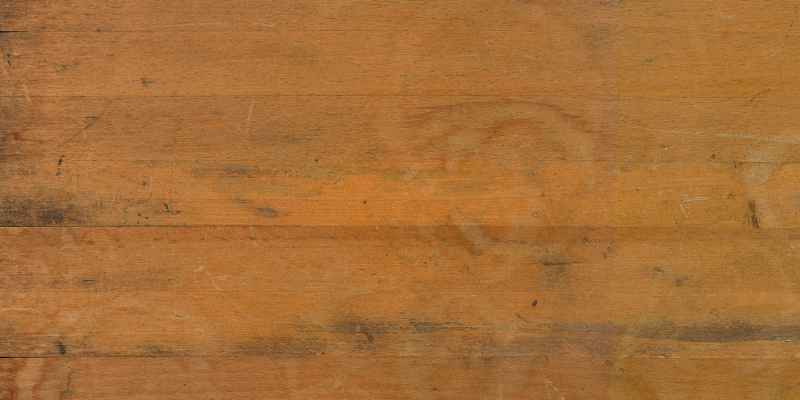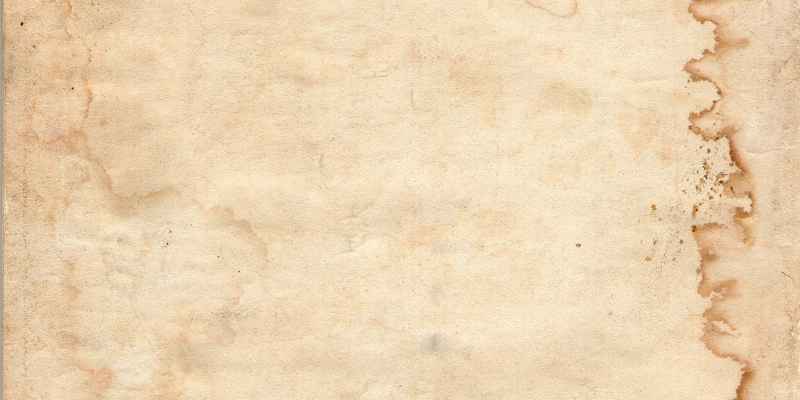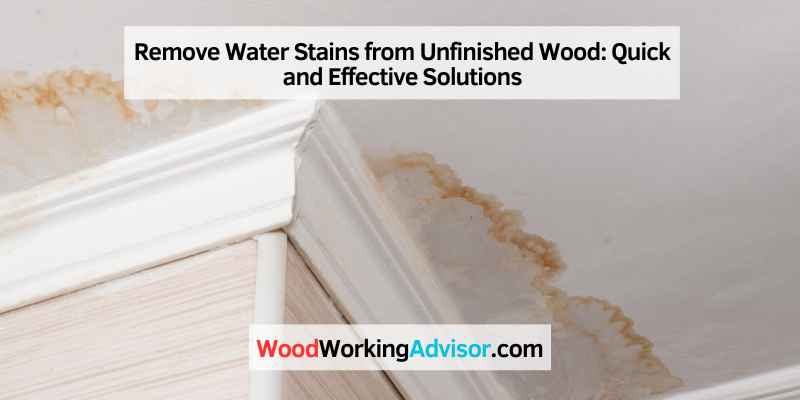To remove water stains from unfinished wood, use a mixture of vinegar and olive oil. Unfinished wood furniture adds a natural and rustic element to your home décor.
However, water stains on this type of wood can be unsightly and difficult to remove. Luckily, there is a simple solution. By using a combination of vinegar and olive oil, you can effectively remove these water stains and restore the beauty of your unfinished wood furniture.
This natural and affordable method not only removes the stains but also helps to nourish and protect the wood. We will discuss the step-by-step process of removing water stains from unfinished wood and provide you with some helpful tips to prevent future stains.
Methods To Remove Water Stains
Looking to remove water stains from unfinished wood? Try these effective methods for getting rid of those unsightly marks and restoring your wood surfaces to their former beauty.
When it comes to wooden furniture, nothing is more frustrating than discovering unsightly water stains. Luckily, there are several effective methods to remove water stains from unfinished wood. In this blog post, we will explore three reliable techniques that can help restore the natural beauty of your wooden furniture. Whether you prefer using vinegar and olive oil, baking soda and toothpaste, or lemon juice and salt, these methods will prove to be useful in tackling those stubborn water stains. Let’s delve into each method and find out how to say goodbye to those pesky stains once and for all.

Using Vinegar And Olive Oil
One popular method for removing water stains from unfinished wood involves using vinegar and olive oil. This simple yet effective combination works wonders in lifting stains and restoring the wood’s natural shine. Here’s how you can do it:
1. Mix equal parts vinegar and olive oil. You’ll only need a small amount, so start with a teaspoon of each.
2. Gently apply the mixture to the water stain. Using a soft cloth, rub the stain in a circular motion.
3. Allow the mixture to penetrate the wood. Leave it on for a few minutes to ensure it works its magic.
4. Wipe off the excess mixture. Using a clean cloth, remove any remaining vinegar and olive oil from the wood’s surface.
5. Buff the area with a dry cloth. This step will help restore the wood’s natural shine and eliminate any lingering traces of the stain.
Using vinegar and olive oil can be a great way to remove water stains from unfinished wood, and the best part is that these ingredients are easily accessible in most households.
Using Baking Soda And Toothpaste
Another effective method for removing water stains from unfinished wood involves the use of baking soda and toothpaste. This combination acts as a gentle yet powerful abrasive, allowing you to scrub away those stubborn stains. Here’s how to do it:
1. Create a paste by mixing baking soda and toothpaste. Start with a tablespoon of each ingredient and adjust as needed.
2. Apply the paste to the water stain. Use a soft cloth or a sponge to gently rub the paste onto the wood’s surface.
3. Scrub the stain in a circular motion. Apply moderate pressure while scrubbing, but be careful not to damage the wood.
4. Rinse off the paste. Use a damp cloth to remove the baking soda and toothpaste residue from the wood.
5. Dry the area thoroughly. To avoid any damage or further staining, ensure that the wood is completely dry.
Using baking soda and toothpaste can be an effective and budget-friendly method for removing water stains from unfinished wood. Give it a try and watch those stains disappear before your eyes.
Using Lemon Juice And Salt
If you’re looking for a natural and eco-friendly way to remove water stains from unfinished wood, the combination of lemon juice and salt might be the answer. The natural acidity of lemon juice, combined with the mild abrasive properties of salt, makes this method effective at removing stains. Here’s how to use this powerful combination:
1. Squeeze fresh lemon juice. You’ll need about half a lemon for this method. Extract the juice and discard the seeds.
2. Add a pinch of salt to the lemon juice. Salt acts as a mild abrasive, aiding in the removal of the water stain.
3. Apply the mixture to the stain. Soak a soft cloth in the lemon juice and salt mixture, then gently rub it onto the wood’s surface.
4. Leave the mixture to work its magic. Allow the lemon juice and salt to penetrate the wood for a few minutes.
5. Wipe away the mixture. Use a clean cloth to remove the lemon juice and salt from the wood, ensuring no residue remains.
Using lemon juice and salt is a natural and effective method for removing water stains from unfinished wood. Give it a try and enjoy the results!
Now that you’re equipped with these effective methods, you can bid farewell to those unwanted water stains on your beloved unfinished wood furniture. Whether you choose to use vinegar and olive oil, baking soda and toothpaste, or lemon juice and salt, these techniques will help you restore the natural beauty of your wooden pieces. Say goodbye to water stains and hello to a rejuvenated, stain-free wood surface.

Conclusion
To recap, removing water stains from unfinished wood requires some simple household items and a little patience. Whether it’s using a mixture of vinegar and olive oil or applying a paste of baking soda and water, these techniques can effectively restore the beauty of your wood surfaces.
Remember to always test a small, inconspicuous area before proceeding and gently buff the treated area to blend it with the surrounding wood. With these tips, you’ll be able to banish water stains and enjoy the natural charm of your unfinished wood furniture or flooring.


